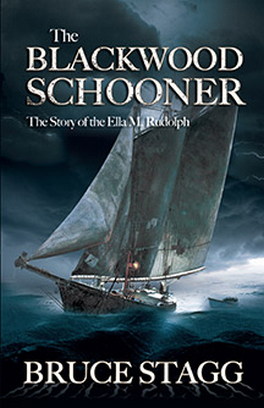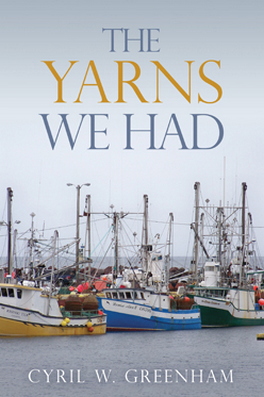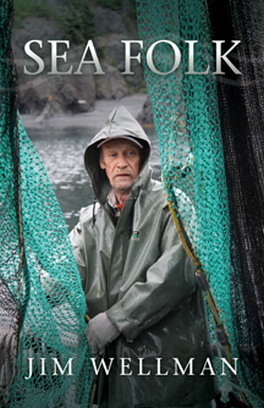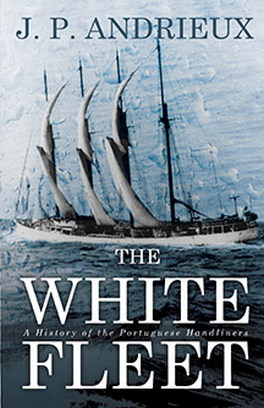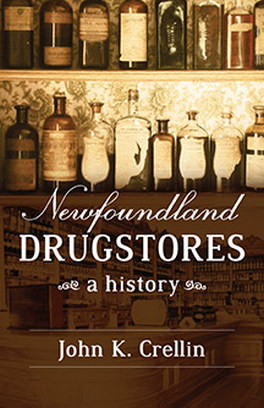“That’s a dangerous coastline, too . . . around Catalina . . . we don’t want to venture too close to the shore in this wind.” On the night of December 6, 1926, during a blinding snowstorm, a schooner out of Port Nelson, Bonavista Bay, Newfoundland, ran into the rugged cliffs just north of Little Catalina. Of the nine crew members, seven men and one woman perished, while one man, the captain’s son, astonishingly survived. This is the amazing true story of the Ella M. Rudolph and her crew. #10 on the Globe and Mail (History) Bestseller List (October 10, 2009)
On the night of December 6, 1926, during a blinding snowstorm, the schooner Ella M. Rudolph out of Port Nelson, Bonavista Bay, Newfoundland, ran into the rugged cliffs just north of Little Catalina. Of the nine crew members, seven men and one woman perished, while one man, the captain’s son, astonishingly survived.
It was a disaster that nearly eradicated one family, caused extreme grief and hardship to five others, and left a devastating mark on several communities. It was quickly reported to the entire island by way of the public dispatches that were posted daily in each post office, and by the large newspapers based in St. John’s and the smaller rural papers scattered around the island. The general public reacted to the devastating news with sincere compassion, and the event was talked about long after the news reports stopped. The story even became immortalized in a verse that many of the time committed to memory and performed regularly. This was a terrible tragedy that had a huge impact with far-reaching consequences, but its impact was not unlike so many other sea tragedies that came before or after. It does not hold any special place in our marine history, and, other than for those who were directly affected, over time it became merely another calamity of the sea.
Sea tragedies have been a part of Newfoundland history from the beginning, when our ancestors came to this island to fish the sea for the abundant cod. Along the rugged coastline they sought out protection from the elements in thousands of tiny coves, inlets, and bays. They built modest homes, and erected fishing sheds, stages, and flakes as close as they could to the fishing grounds. They harvested timber from the forest and they constructed schooners, punts, and dories in which they ventured far and near in search of their livelihoods. And so, the sea became an intimate and intricate part of their lives. They toiled upon it, they respected it, they loved it, and they feared it. The fear was fostered by an understanding that the sea, each year, would take hundreds of lives. No one, and no community, was immune. There are hundreds of stories as dramatic and horrific as the one of the Ella M. Rudolph. The history of Newfoundland and Labrador is scarred with them; it is estimated that as many as ten thousand shipwrecks are scattered around our hazardous coastline. The majority of these shipwrecks resulted in the loss of lives, and each of them had its stories of struggling widows and orphaned children.
The stories are endless, and of late many authors have done outstanding work researching and recording many of them. The reader quickly realizes that each tragedy has its own unique cause and circumstances. But there existed, for each vessel lost, predetermined commonalities that added the element of inevitability. Just as today we appreciate that, with the many thousands of motorized vehicles using our highways, crashes will inevitably occur and lives will be lost. In earlier times, with thousands of vessels venturing on the sea daily, it was understood that mishaps would happen.
This, of course, is not to suggest that tragedies at sea do not occur today, because they do. In spite of the fact that we now have modern navigational technologies like radar, Global Positioning Systems (GPS), computer tracking, satellite weather forecasting, etc., we still have too many ocean disasters. The mariners from the era of the Rudolph did not, however, have the luxury of these sophisticated devices and were forced to navigate our perilous waters with nothing more than a weather glass, a compass, a log, and perhaps a chart. And, when we realize that these vessels were powered only by the wind in their sails, it is a wonder why there were not even more mishaps.
Another critical truth was the fact that many of the early captains had little or no formal education and had to rely on experience and creativity to do what is today done by computers. In his book Northeast of Baccalieu, John Feltham points out that many of the early skippers would memorize the courses, and sometimes they would create mnemonic rhymes as devices. He presents “The Song of the Wadmans” as a classic example; it sets the course from Cape Bonavista to Twillingate.
From Bonavist’ Cape to Stinking Isles,
The course is north full forty miles,
When you must bear away northeast,
Till Cape Freels Gull Island bears west-northwest.
Then nor’-nor’west thirty-three miles,
Three leagues offshore lies Wadham’s Isles,
Where of a rock you must beware,
Two miles sou’-southeast of the isles it bears.
Therefore, my friend, I would you advise,
Since all those rocks in danger lies,
That you may never amongst them fall,
But keep your luff and weather them all.
As you draw near to Fogo land,
You’ll have fifteen fathoms in sounding sand;
From fifteen to eighteen, never more,
And that you’ll have close to shore.
When you abreast of Round Head be,
Then Joe Batt’s Point, you’ll plainly see;
To starboard then three or four miles,
You’ll see a parcel of damned ragged isles.
When Joe Batt’s Point you are abreast,
Then Fogo Tickle bears due west;
But unkind fortune, unlucky laid,
A sunken rock right in the trade.
So north-nor’west you are to steer,
Till Brimstone Head doth plain appear;
Which over Pilley’s Point you’ll see,
Then of that danger you are free.
And as you draw within a mile,
You’ll see a house on Syme’s Isle;
The mouth of the channel is not very wide,
But the deepest water is on the larboard side.
When within Syme’s Point you have a shot,
Then three fathoms you have got;
Port hard your helm and take care,
In the middle channel for to steer.
When Pilley’s Point you are abreast,
Starboard haul and steer south-sou’west,
Till Pilley’s Point covers Syme’s stage,
Then you are clear, I will engage.
This verse, I believe, is an illustration of exactly how ingenious our Newfoundland seamen were. It strongly supports the claim that they were, and are, among the best mariners in the world. Nevertheless, when unexpected storms raged and angry seas swelled, they were at the mercy of the elements. No amount of experience or expertise could prepare them for what the North Atlantic could, and often did, throw at them, as was the case with Captain Eleazar Blackwood and the crew of the Ella M. Rudolph that ill-fated night of December 6, 1926.
The story of how the Rudolph was built, how she ended up out in a winter storm, and to some extent why she was shipwrecked, is an enticing one . . .-- The Telegram --
An extensively researched account . . .-- WoodenBoat --
This is a book that would be of interest to high school students, and particularly to those studying life in the outports of Newfoundland, during the first half of the last century. For those engaged in the principles of the practice of command of wind-driven ships, there is much to be gleaned.-- The Northern Mariner --
